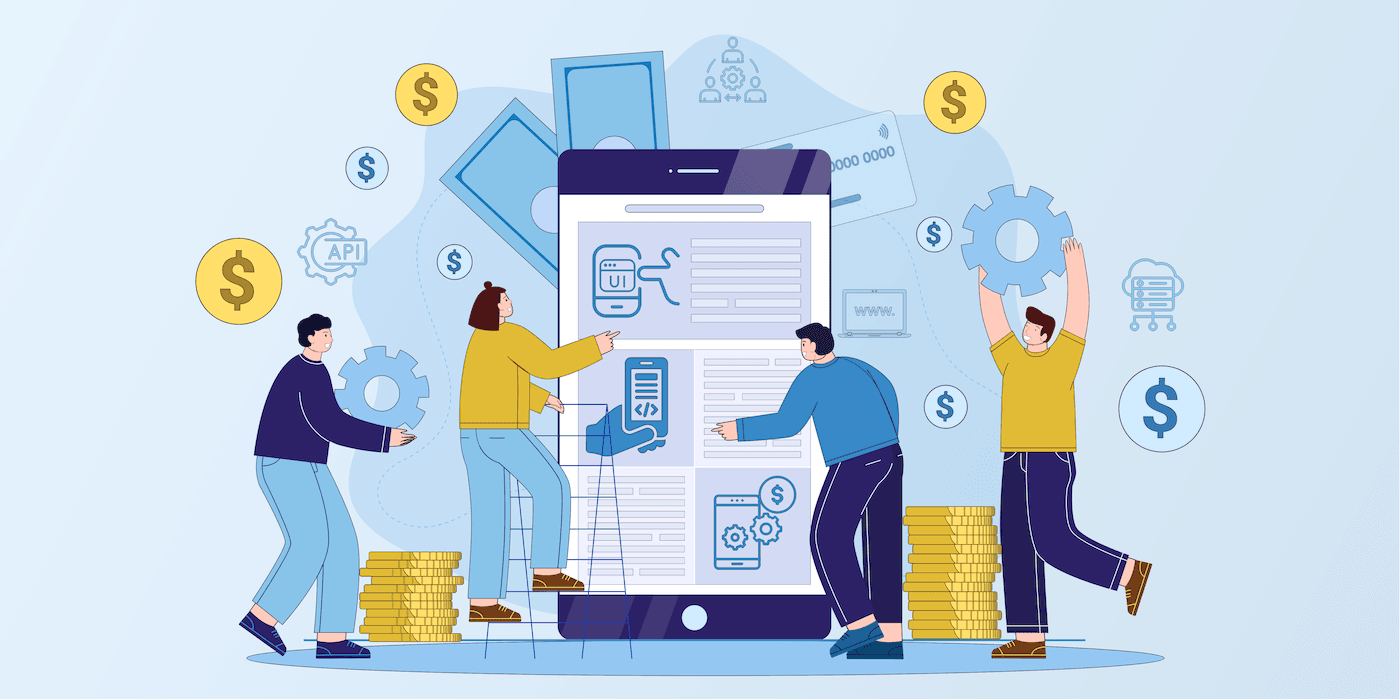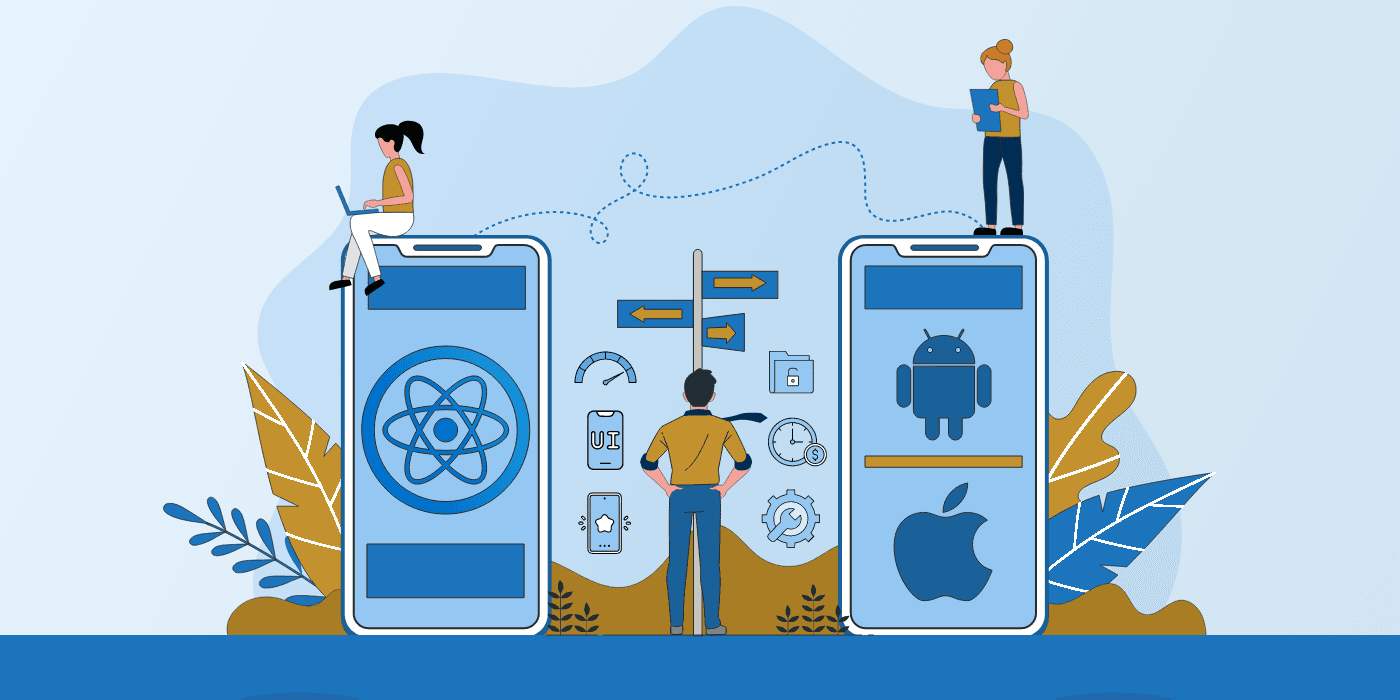Mobile App Development Cost Breakdown

Mobile apps have become an indispensable tool for both businesses and consumers alike. However, business owners need to understand the financial aspects of developing a mobile app before embarking on the journey. The creation of a mobile app is not a one-time event but a lifecycle comprising multiple stages, each associated with its own costs. These expenses vary and recur at different frequencies from the initial design phase to deployment and maintenance.
Recognising these costs is vital as it facilitates better planning, budget allocation, and financial management. In this blog, we will explore in detail the various costs associated with the development of a mobile app. We will discuss when these costs are likely to occur and the influencing factors that business owners need to keep a watch on.
Mobile app costs can be broadly classified into three main categories: design costs, development costs, and running costs. In the sections that follow, we will explore each of these cost categories in detail, providing insights into what business owners can expect to invest at every stage of their mobile app's lifecycle.
UI/UX Design Cost
The UI/UX design cost is most likely the first cost that you as an app owner will incur. UI/UX design stands for User Interface and User Experience design. During this phase, the visual aspects of how a mobile app looks and how the user navigates and accomplishes his task using the app are designed.
A good UI/UX design is crucial because it ensures people find the app easy to use and enjoy using it. This can make a big difference in whether an app succeeds or fails.
The cost of UI/UX design primarily depends on how complex the app is. This includes the number of User Interface elements that the app uses and how customized and unique they need to be. It also depends on the number of user workflows or use cases that the app supports.
Another major factor is the skill and experience level of the designer. Highly skilled designers do extensive research on the target audience and create experiences most suited for them. They factor in the demographics of the user and keep up with the latest trends. Good quality designs might cost a bit more, but it is a good initial investment to make on an app. A great design lays a solid foundation for what follows subsequently.
Development Cost
Development is the crux of the project and most likely contributes to a significant portion of the overall costs. The total development costs will depend mainly on the complexity of the app, the framework and methodology used for development, and the functionality and components needed in the overall solution.
The Mobile App itself is one of the many components needed for a complete business solution. Usually, users would like to access the application through a web app from a browser on a desktop. The user and business data sent and received through the app are stored in databases in the cloud and accessed through secure backend applications. Most applications would also require an admin dashboard for control and monitoring of the application by a central administrator.
Hence, development costs are more likely to include:
- Mobile app Development Cost
- Web app Development Cost
- Admin Dashboard Development Cost
- Backend and Database Development Cost
- Cloud Infrastructure Development Cost
Proper development practices play a pivotal role in the future running costs of the app. An optimally designed system will be scalable, efficient, and easier to maintain, leading to lower running costs in the long term. Additionally, well-written and modular code is easier to update and less prone to bugs, reducing potential maintenance costs.
As we will explain in the next sections, running costs can become very significant over a period of time. It is very important that the initial code developed is architected and developed correctly.
Running Costs
Once the development is complete and the app is ready to launch, it's time to watch out for the running costs.
To make the application accessible from anywhere, the backend and database need to be deployed on an infrastructure, provided by a cloud service like AWS or Digital Ocean. The mobile apps themselves have to be published in the Apple App Store and Google Play stores. To make the application access seamless and secure, businesses need domain names and SSL certificates too.
Mobile apps might also use services from a third party. For example, the mobile app might use a streaming service or interface with ChatGPT or an AI service and will incur costs.
To summarise, the running costs could be made up of:
- Infrastructure (Cloud) costs
- Google and Apple stores costs
- Domain name and SSL costs
- Third-party services costs
The running costs are recurrent in nature and potentially increase with the number of users and how often they use the application. It is important that during development, scalability of the application is built-in and is developed in a way to use the infrastructure and resources in an optimized manner.
Maintenance and Support Costs
Maintenance and support are very crucial to an app's success after its initial launch. Technology advances at a rapid pace. Mobile phones keep getting better and better with significant advances to both the hardware and operating system software that runs them. The mobile applications need to be updated regularly, to be able to run smoothly and use the new advanced features of new versions of the mobile phones.
Besides, bugs in software naturally creep up over time. Even the best thought out and well-tested software can fail under some new conditions and environment. Errors in the software need to be monitored and addressed quickly before they result in significant business losses.
Mobile apps also evolve over time. Businesses can gauge the real impact of their app only after the launch and their customers start actively using it. Valuable feedback thus gathered invariably leads to enhancements to the mobile app. Hence, it is crucial to budget for such changes and enhancements ahead of time.
Below we have summarised our discussion so far.
| Cost Category | Cost | Frequency |
|---|---|---|
| Design Cost | UI/UX Design Cost | One Time |
| Development Cost | Mobile App Development Cost | One Time |
| Desktop App Development Cost | One Time | |
| Backend App Database Development Cost | One Time | |
| Running Cost | Infrastructure Cost | Monthly |
| Domain Name Cost | Yearly | |
| App Store Cost | Yearly | |
| Third Party Services Cost | Typically Monthly | |
| Maintenance & Support Cost | Typically Yearly |
Conclusion
Embarking on the journey of app development is indeed an exciting venture. From bringing your vision to life to providing a valuable tool for your customers, the benefits are manifold. But it is also a path that requires careful financial planning and strategic decision-making.
In this blog, we have attempted to break down the costs involved in developing and maintaining a mobile app. If you are ready to take the next steps, contact us at app@appilytech.com, and we would help budget and develop a mobile app that can truly transform your business.
Contact Us
You Might Be Interested

Technology
React Native App Vs Native App: Five Factors To Consider
React Native or Native apps? Read our in-depth comparison, covering performance, User Interface, development time & cost and ease of maintenance and support.

APPiLY Info
Our Mobile App Technology Stack
Explore our proven app development tech stack—React Native, React, NodeJS, MongoDB, and AWS—that delivers modern apps with enhanced flexibility and reusability.